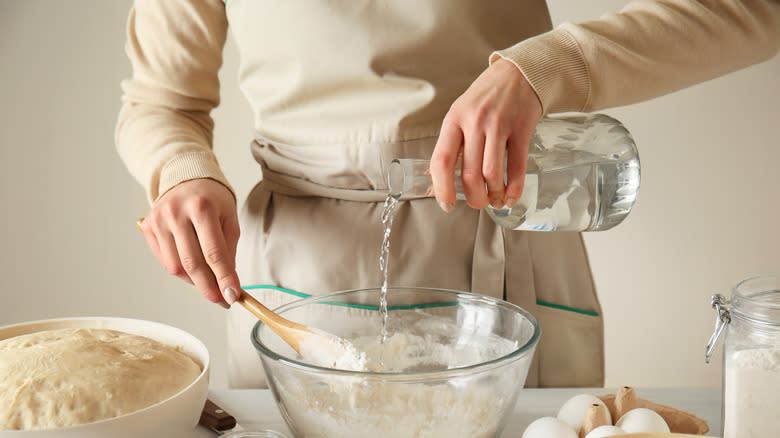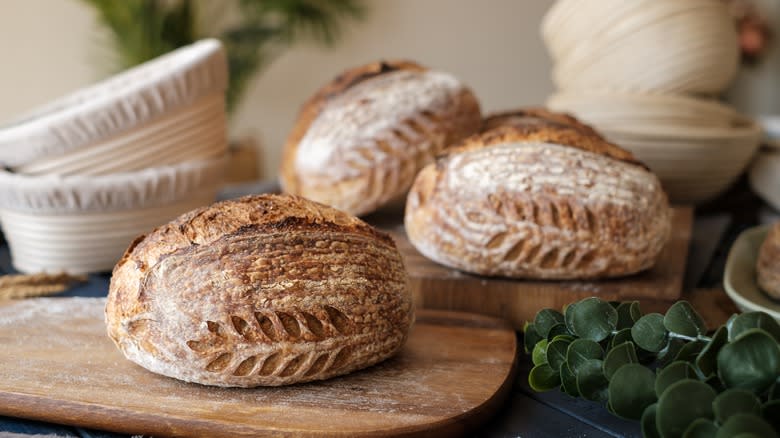Why Hydration Is Key To Baking An Open-Crumb Bread Loaf

Many home bakers shy away from attempting light, airy bread recipes because they are notoriously hard to execute. It is tough to tackle a delicate bread, like focaccia, even with foolproof focaccia techniques that walk you through the process step-by-step. One element that dramatically influences the fluff of your bread loaf is the hydration level, particularly concerning how much flour you are using. When it comes to pulling off an open-crumb bread (the kind that has an interior that's fluffy and open) your flour-to-water ratio matters a lot.
Understanding why hydration ratios are so important to your open-crumb bread loaf will keep you from panicking when you mix your dough and it looks wetter than you think it should. It's not unreasonable to get nervous and start sprinkling in additional bits of flour, but here is why you should hold your heavy hand. Bread and pastries specialist Jorgen Carlsen explains that bread dough is like a balloon being inflated that wishes to inhale yeast in a way that makes its gluten structures strong. That "strong" dough needs a complementary element that also makes dough elastic and easily elongated. An extra dose of hydration can give your dough that elasticity, or, in baker's speak, "extensibility."
According to The Pantry Mama, this elastic, extra-hydrated dough will ferment faster. You'll be on your way to a thinner crust and lighter bread, just make sure your higher-hydration dough features a flour that can handle that level of saturation.
Read more: The Most Useless Cooking Utensils, According To Chefs
Mistakes To Avoid When Baking Open-Crumb Breads

One of the biggest mistakes everyone makes when baking bread is underestimating the importance of your choice of flour. This is especially true when you are adding higher hydration levels to pull off a successfully light and evenly aerated open-crumb bread.
The Sourdough Journey explains that different flour is "thirstier" and will more easily absorb water than other flours. Thus, choosing the right flour to support the development of your dough's gluten is important. Your dough's gluten will hold CO2 that forms air pockets in your bread, which you want to be distributed evenly and in similar-sized bubbles for that open, delicate interior of your bread. The higher protein in bread flours makes them the better choice for an open-crumb bread loaf.
Amply hydrating your dough and choosing the right flour for higher hydration levels are an important box to check for pulling off a successfully aerated open-crumb bread. Be sure you do not neglect the other basics of bread-making along the way, though. Have patience, since good sourdough recipes can take several days to execute from start to finish. Choosing the right sourdough starter recipe and avoiding any tendency to overwork your dough will also make all the difference.
Read the original article on Mashed.

